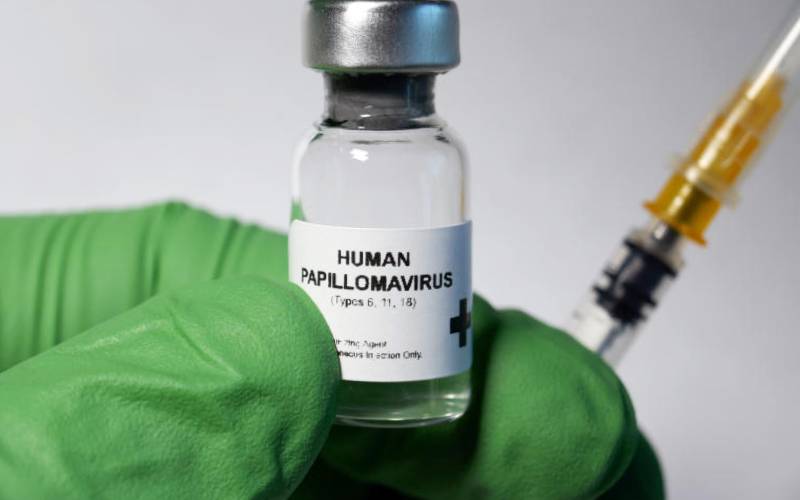
A new study has said just one dose of HPV vaccine is enough to protect against the cancer-causing Human Papillomavirus.
The study, published in the Jama Network journal, argues that instead of the standard two doses, one dose can protect one from later developing cervical cancer.
A single dose works as good as three doses, argues the study's findings published on December 27, 2019.
“Compared with unvaccinated women, infection with HPV type 6,11,16 or 18 was significantly less prevalent among women who received one dose, two doses or three doses of HPV vaccine,” reads the study conducted between 2009 and 2016.
The study was conducted by a team of specialists in the United States drawn from UTHealth School of Public Health, Houston Texas, Medical College of Winscon, Milwaukee, and Harvard Medical School Boston.
Mass vaccination
Kenya is currently carrying out mass vaccination launched in October 2019 against the HPV virus where 800,000 school-going girls aged 10 years are targeted. The vaccination will be conducted in two phases - six months apart, of a dose each.
This is meant to protect girls against HPV, increasing their immunity against cervical cancer, which kills 3,286 women every year and with 5,250 being diagnosed with the same in the country.
HPV type 16 and 18 are responsible for up to 70 per cent of cervical cancers according to medical journal webmd.com while types 6 and 11 are known to cause genital warts (even in men) but rarely does this develop to cancer.
In the latest study by Jama Network, a sample of 1,620 women with a mean age of 22 years participated. Out of the sample, 1,004 were unvaccinated while 616 received the jab.
Of the 616, 106 received one dose, 126 received two doses and 384 received three doses.
The study found out that the prevalence of the virus was 12.5 per cent among the unvaccinated lot.
Among the vaccinated, the prevalence stood at 2.4 per cent among those with one dose; 5.1 per cent for those who had two doses and 3.1 per cent for those who had three doses.
In figures: HPV type 6,11,16,18 was traced in 111 unvaccinated women, 14 who received three doses, seven who received two doses, and four who received one dose.
For HPV types 31,33 and 45: 57 of the unvaccinated lot were infected, 22 in those who received three doses, three in those who received two doses and 11 in those who received one dose.
Other high risk HPV types were traced in 254 unvaccinated women, 109 of those who received three doses, 34 in those who received two doses and 22 in those who had one dose.
“There was no significant difference in prevalence for one dose versus two doses or one dose versus three doses,” explained the findings.
It adds: “Difference(s) were not statistically significant for cross protection (except for two doses versus unvaccinated and one dose versus two doses) and other high risk HPV types.”
During trials
The findings on the efficacy of the vaccine, the study reads, do support previous researches during trials of the HPV vaccine that compared its effectiveness with one, two and three doses.
One limitation of this latest study, however, is that it did not consider the different times the women were vaccinated.
 The Standard Group Plc is a multi-media organization with investments in media platforms spanning newspaper print
operations, television, radio broadcasting, digital and online services. The Standard Group is recognized as a
leading multi-media house in Kenya with a key influence in matters of national and international interest.
The Standard Group Plc is a multi-media organization with investments in media platforms spanning newspaper print
operations, television, radio broadcasting, digital and online services. The Standard Group is recognized as a
leading multi-media house in Kenya with a key influence in matters of national and international interest.











